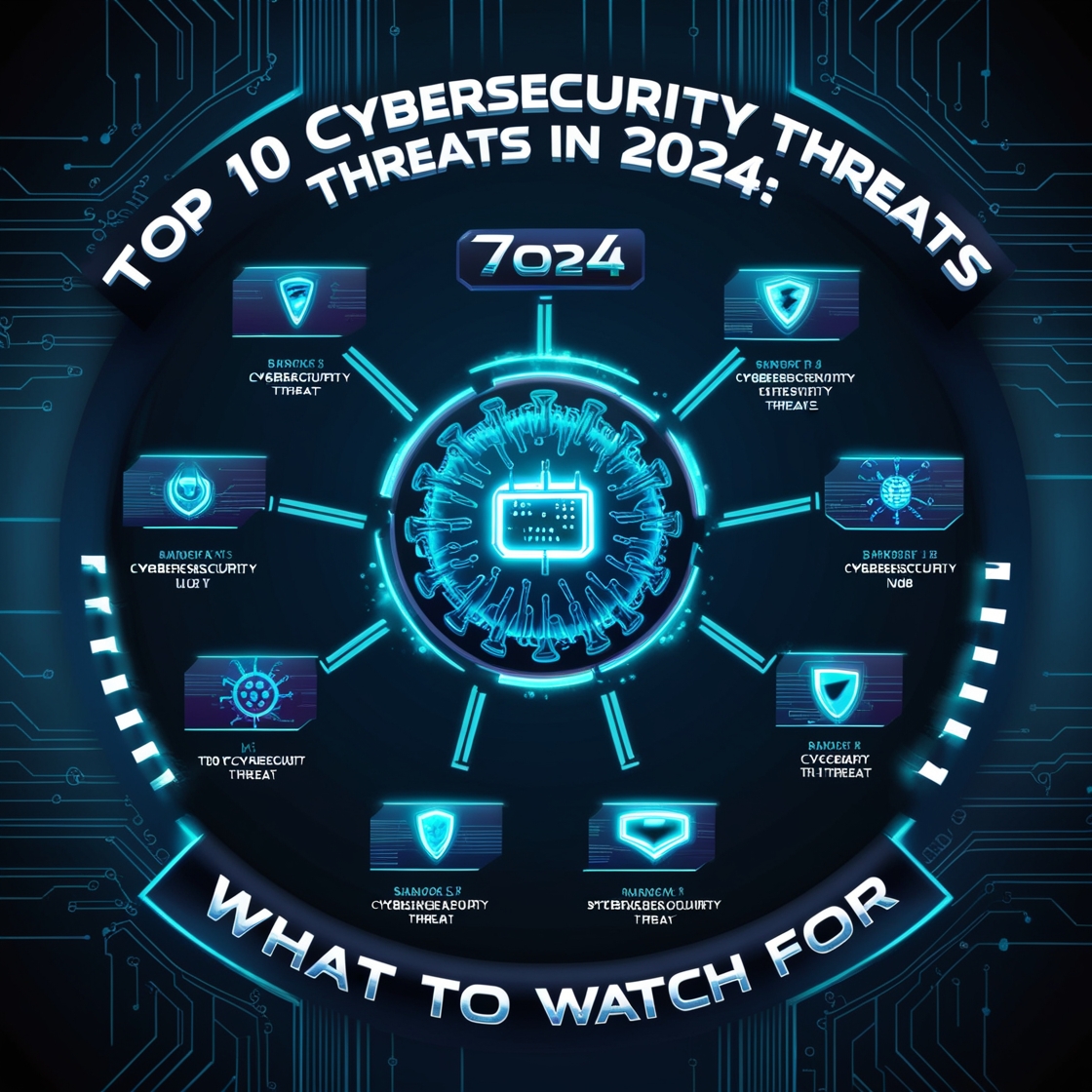Introduction
In 2024, the digital landscape continues to evolve at a rapid pace, and with it, the variety and complexity of cyber threats increase. From businesses and governments to individuals, cybersecurity has become a top priority. This year, cyber threats are advancing in sophistication, and understanding these potential threats is crucial for effective defense. Let’s dive into the top 10 cybersecurity threats in 2024 that everyone should be aware of.
The Growing Importance of Cybersecurity in Today’s World
With society increasingly interconnected, the stakes for cybersecurity are higher than ever. As digital transformation spreads across industries, so too do the opportunities for cybercriminals to exploit weak points. Whether it’s through cloud services, personal devices, or workplace systems, cybersecurity now impacts nearly every aspect of our lives.
Top Cybersecurity Threats in 2024
The following sections outline the top 10 cybersecurity threats that individuals and organizations should be prepared to confront in 2024.
1. Advanced Phishing Attacks
Phishing is not new, but it remains one of the most persistent cybersecurity threats. In 2024, phishing attacks have become more sophisticated, often appearing as legitimate messages from trusted sources. Attackers now leverage AI to craft highly convincing emails, targeting individuals with specific information to increase their success rate.
2. Ransomware-as-a-Service (RaaS)
Ransomware attacks are no longer just the work of individual hackers; they’ve evolved into a business model. Ransomware-as-a-Service (RaaS) allows hackers to “rent” ransomware tools to deploy attacks on a mass scale. Some of the most dangerous ransomware groups are running their operations like a subscription service, making ransomware more accessible and profitable than ever.
3. AI-Powered Malware
Malware has taken a significant leap forward with the integration of AI. Attackers now use AI to create malware that can learn and adapt, making it harder to detect and neutralize. AI-powered malware can analyze a target system’s defenses and modify its attack strategy in real-time, creating an unprecedented level of adaptability.
4. Supply Chain Attacks
Cybercriminals have found a way to infiltrate systems through third-party suppliers. In 2024, supply chain attacks are increasingly common, as they allow attackers to access multiple systems through a single vulnerability. By targeting trusted vendors or suppliers, attackers can penetrate multiple organizations in one fell swoop.
5. Insider Threats
While external threats garner most of the attention, insider threats—whether intentional or accidental—are equally dangerous. Employees with access to sensitive information can become a serious cybersecurity risk, either through negligence or malicious intent. Insider threats are challenging to manage, as they often involve individuals who have authorized access to crucial systems.
6. IoT Vulnerabilities
The Internet of Things (IoT) continues to grow, connecting everything from home appliances to industrial machinery. However, this connectivity brings significant security risks. Many IoT devices lack robust security features, making them easy targets for cybercriminals. As IoT networks expand, so does the surface area for potential attacks.
7. Deepfake Technology Used in Scams
Deepfake technology, where AI creates hyper-realistic fake images and videos, is now being weaponized in cyber scams. In 2024, deepfakes are used for social engineering, impersonating individuals in video calls or altering recorded messages to trick people. This technology poses a serious risk for identity theft, financial scams, and corporate fraud.
8. Cryptojacking
With the rise of cryptocurrency, cryptojacking has become a favored tool for cybercriminals. This method involves hijacking a computer’s processing power to mine cryptocurrency, often without the user’s knowledge. Cryptojacking can damage hardware, slow down systems, and lead to increased power costs for individuals and businesses alike.
9. Cloud Security Challenges
Cloud technology has revolutionized data storage and access, but it also presents unique security challenges. Cloud providers are increasingly targeted as more organizations move their data to the cloud. Without proper safeguards, cloud environments can be vulnerable to data breaches, unauthorized access, and misconfigured settings.
10. Zero-Day Exploits
A zero-day exploit is a vulnerability that is unknown to the software vendor and therefore has no patch available. Cybercriminals actively search for these vulnerabilities to launch attacks before a patch is created. In 2024, zero-day exploits remain a major concern, as they can devastate systems that are seemingly well-protected.
Conclusion
Cybersecurity threats in 2024 are varied and complex, impacting individuals and organizations alike. With new technologies come new risks, and cybercriminals are quick to adapt to exploit these vulnerabilities. The key to navigating these threats is proactive security, which includes staying informed, training employees, and implementing advanced security measures. Staying vigilant is more critical than ever.
FAQs
What is the biggest cybersecurity threat today?
The biggest threat varies by region and industry, but ransomware attacks are currently among the most common and damaging.
How can businesses protect themselves from ransomware?
Businesses can protect themselves by regularly updating their systems, backing up data, and educating employees on security best practices.
What should individuals do to stay secure online?
Individuals should use strong passwords, avoid clicking on suspicious links, and enable two-factor authentication whenever possible.
How does AI impact cybersecurity?
AI is a double-edged sword; it enhances security capabilities but also allows attackers to launch more sophisticated attacks, like AI-powered malware.
Are traditional antivirus solutions enough to protect against modern threats?
Traditional antivirus software is a good start but often lacks the capabilities needed to detect advanced threats like AI-driven malware and zero-day exploits.
